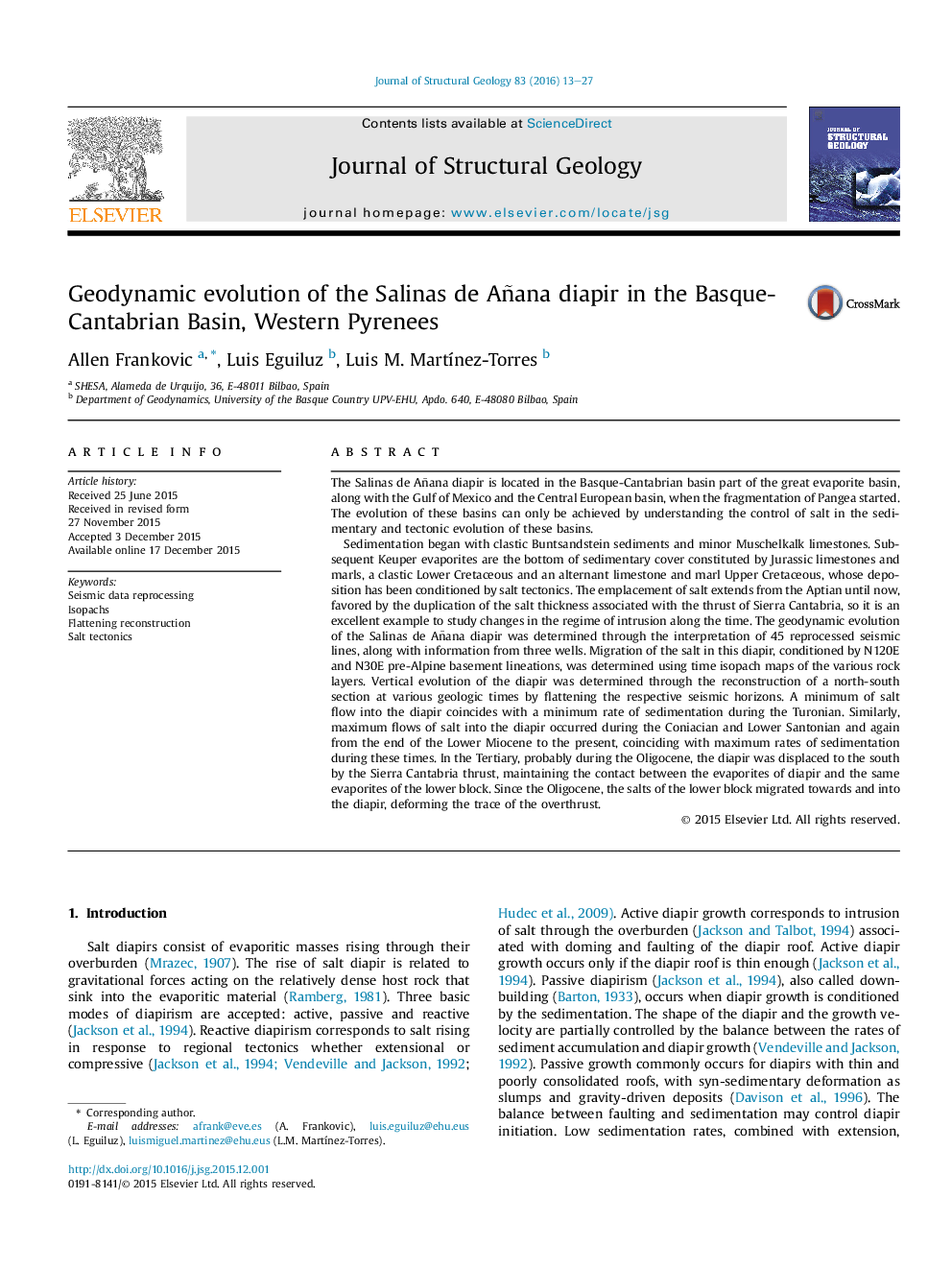| کد مقاله | کد نشریه | سال انتشار | مقاله انگلیسی | نسخه تمام متن |
|---|---|---|---|---|
| 4732967 | 1640497 | 2016 | 15 صفحه PDF | دانلود رایگان |
• Salinas de Añana diapir structure has been determined by 45 reprocessed seismic lines and 3 wells.
• Migration of the salt has been determined using isopach maps of various rock layers.
• Rate of sedimentation around diapir has been determined by flattening of seismic horizons.
• In the Tertiary the diapir was displaced to the south by the Sierra Cantabria overthrust.
• Since the Oligocene lower block salts migrated into the diapir deforming the overthrust trace.
The Salinas de Añana diapir is located in the Basque-Cantabrian basin part of the great evaporite basin, along with the Gulf of Mexico and the Central European basin, when the fragmentation of Pangea started. The evolution of these basins can only be achieved by understanding the control of salt in the sedimentary and tectonic evolution of these basins.Sedimentation began with clastic Buntsandstein sediments and minor Muschelkalk limestones. Subsequent Keuper evaporites are the bottom of sedimentary cover constituted by Jurassic limestones and marls, a clastic Lower Cretaceous and an alternant limestone and marl Upper Cretaceous, whose deposition has been conditioned by salt tectonics. The emplacement of salt extends from the Aptian until now, favored by the duplication of the salt thickness associated with the thrust of Sierra Cantabria, so it is an excellent example to study changes in the regime of intrusion along the time. The geodynamic evolution of the Salinas de Añana diapir was determined through the interpretation of 45 reprocessed seismic lines, along with information from three wells. Migration of the salt in this diapir, conditioned by N120E and N30E pre-Alpine basement lineations, was determined using time isopach maps of the various rock layers. Vertical evolution of the diapir was determined through the reconstruction of a north-south section at various geologic times by flattening the respective seismic horizons. A minimum of salt flow into the diapir coincides with a minimum rate of sedimentation during the Turonian. Similarly, maximum flows of salt into the diapir occurred during the Coniacian and Lower Santonian and again from the end of the Lower Miocene to the present, coinciding with maximum rates of sedimentation during these times. In the Tertiary, probably during the Oligocene, the diapir was displaced to the south by the Sierra Cantabria thrust, maintaining the contact between the evaporites of diapir and the same evaporites of the lower block. Since the Oligocene, the salts of the lower block migrated towards and into the diapir, deforming the trace of the overthrust.
Journal: Journal of Structural Geology - Volume 83, February 2016, Pages 13–27
